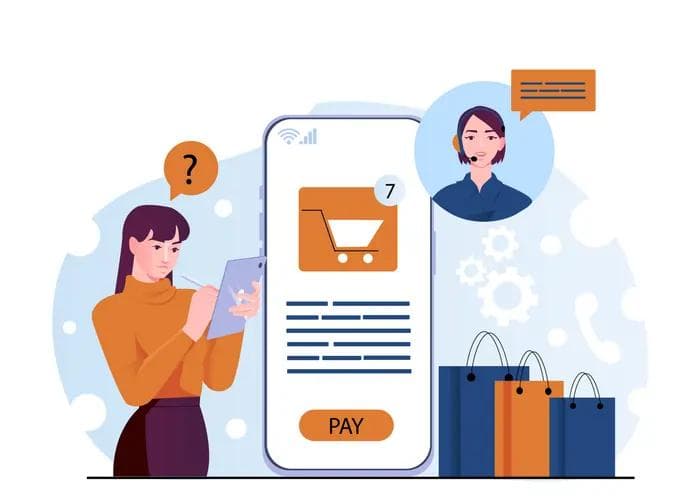The cost of free returns and why retailers might not need to abandon much loved perk
The cost of free returns and why retailers might not need to abandon much loved perk
Published by Jessica Weisman-Pitts
Posted on October 11, 2022

Published by Jessica Weisman-Pitts
Posted on October 11, 2022

By Svetlio Todorov, MD emerchantpay
“Returns” is starting to become a controversial topic in the world of online retail. Not only do returns make stock management and cash flow tricky, they contribute a major cost to merchants.
With the cost-of-living crisis starting to take hold, retailers are seeing consumers become more frugal and considered with their purchases. It is no surprise then that we are seeing high street brands such as Zara starting to charge for returns. However, established eCommerce giants such as Boohoo.com, which have built their business model on fast and easy fashion, are now following suit. This is showing that leading retailers are reconsidering the free returns model, but the question remains: is this a short-term fix or long-term solution?
A new symptom of the Covid pandemic?
During the pandemic, consumers were restricted from going to the high street to purchase products in real life, so they got into the habit of overbuying, often with the intention of returning what they did not want or need.
However, this behaviour has continued post-lockdown and retailers that had planned for increased returns in the short term are now having to consider their returns and refunds strategy again, taking this shift in consumer behaviour into account. The volume of returns, coupled with many retailers’ efforts to re-open high street stores, is proving costly at a time when margins are increasingly tight. The added weight of returned items means retailers are having to implement additional processes and staff, which comes at a cost that for many can no longer be offered as a free service.
On the other side, rising to consumer demand is what will give merchants a competitive advantage. In May 2022, 94% UK consumers surveyed by Appinio said that free returns are important to them when shopping online, with 18% always shopping at a particular online store due to its free returns policy. A further 71% would avoid shopping online if they were required to pay to return the items. Last year, emerchantpay’s New World One Market report showed that for more than a fifth (22%) of consumers, ease of return was a primary consideration before choosing where to buy a non-grocery product online, under the value of £50. This number rose to a quarter (25%) for purchases of more than £50, showing that to remain competitive, the returns process must be as frictionless as possible.
Optimising data use
By working with a payments partner, merchants can analyse data and pinpoint where they can and cannot afford to compromise on returns.
While the benefits for online retailers are obvious, all merchants can analyse data captured from the latest wave of digital consumers. The insights gleaned will enable retailers to remain agile and adapt quickly to changing demands, therefore helping to deepen customer relationships and maximise sales.
Payment data can also be used to identify payment optimisation areas. Looking at inter-regional, domestic, and intraregional transactions, retailers need to ensure their payment set-up is optimised to facilitate these transactions. With local acquiring, retailers will benefit from optimised costs and better payment acceptance rates.
Payments can therefore act as a competitive advantage rather than simply being an operational process. Merchants who can leverage payment data and gain a deeper understanding of their payment flows are well equipped to increase their revenue and provide more intuitive customer experiences.
However, unlocking that revenue requires an understanding of the nuances behind consumer behaviour, technology, as well as the local expertise for cross-border growth. Merchants of all sizes have a unique opportunity to capitalise on massive shifts in consumer behaviour. A payments partner should provide strategic advice and the necessary insights for retailers to build an effective payment strategy for growth, with the latest tech developments in mind.
Managing chargebacks proactively
Another thing to consider is chargebacks, which can happen without an item being returned. A recent study found that nearly one in five consumers who have filed a chargeback dispute have committed first party fraud by submitting false claims to get their money back for legitimate purchases. The hidden costs of chargebacks range from the time and resource spent investigating and disputing chargebacks, to potential fines imposed by the card schemes if the number of chargebacks is too high. In the worst-case scenario, the retailer may even lose the ability to accept payments.
Card schemes have services in place to protect merchants by providing an opportunity to investigate and dispute the chargeback. For example, Visa RDR is a product upgrade of Visa’s original Chargeback Dispute Resolution Network, aiming to automate dispute resolutions in the pre-dispute stage of a chargeback.
Online retailers should be prepared for chargebacks that may arise as their sales grow. They should therefore seek clear guidance and support from their PSP on how to proactively prevent chargebacks as much as possible, and defend chargeback claims with a straightforward, streamlined process.
Returns are not going anywhere and free returns for refunds are always going to be a crowd pleaser with consumers. It is important that merchants weigh up the pros and cons of their returns policy to ensure it is viable.
Striking the right balance between transparent refund terms and trying to deter consumers from returning purchases is vital for merchants’ continued growth within a competitive, evolving ecosystem.
Explore more articles in the Business category











